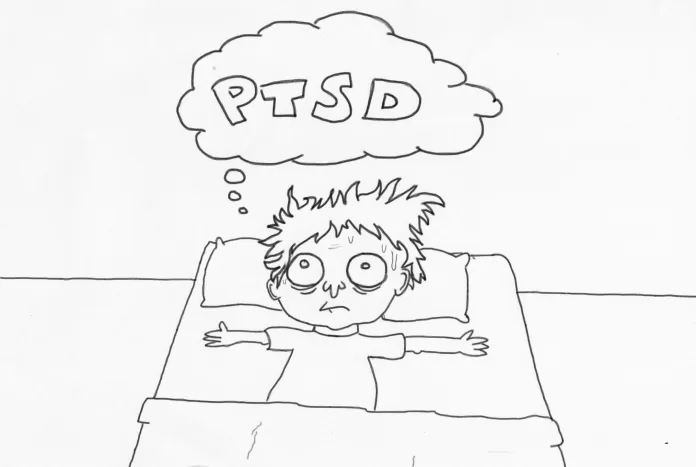Post-Traumatic Stress Disorder (PTSD) is a condition that affects many individuals who have experienced or witnessed a traumatic event. This disorder can have profound effects on one’s mental and physical well-being, making understanding and awareness vital for both those affected and society at large. This blog post aims to provide an in-depth exploration of PTSD, its symptoms, causes, and the importance of early intervention and support.
Introduction to PTSD
PTSD is a mental health condition triggered by experiencing or witnessing a traumatic event. These events can include natural disasters, serious accidents, terrorist acts, war, combat, or personal assaults. While it is normal to experience some symptoms after trauma, individuals with PTSD continue to experience significant distress and impairment in their daily lives long after the danger has passed.
Symptoms of PTSD
- Intrusive Memories: One of the hallmark symptoms of PTSD includes the presence of intrusive memories. These may manifest as distressing memories about the traumatic event, flashbacks that feel as if the event is happening again, and nightmares or distressing dreams related to the event. Individuals may also experience severe emotional distress or physical reactions when reminded of the trauma, whether through people, places, or situations.
- Avoidance: Individuals with PTSD often engage in avoidance behaviors. This involves steering clear of people, places, activities, or situations that remind them of the traumatic event. They may also avoid discussing the event or their feelings about it, as confronting these reminders can be overwhelmingly distressing.
- Negative Changes in Thinking and Mood: PTSD can lead to negative transformations in cognitive processes and emotions. Those affected may experience hopelessness about the future, memory difficulties unrelated to injury (such as forgetting a key aspect of the traumatic event), and feelings of detachment or estrangement from family and friends. Additionally, there might be a loss of interest in previously enjoyed activities and difficulties with positive emotions, leading to numbness or emotional flatness.
- Changes in Physical and Emotional Reactions: Known as arousal symptoms, these include abrupt and exaggerated alert responses, irritability, angry outbursts, trouble sleeping, and self-destructive behavior. Individuals may also find themselves perpetually on edge, having difficulty concentrating, or being easily startled.
Common Triggers for PTSD
Various incidents can act as catalysts for PTSD. Serious accidents, like car crashes, violent personal assaults such as sexual assault, natural disasters (e.g., hurricanes, earthquakes), and human-caused events like terrorist attacks or armed conflict are significant triggers. Understanding these triggers is crucial in recognizing and empathizing with those who might be struggling with PTSD.
The Impact of PTSD on Daily Life
PTSD can profoundly affect everyday life, interfering with work, relationships, and general well-being. Those affected might struggle with maintaining employment or educational pursuits and experience strained relationships with family and friends due to their symptoms. The intense mental and emotional tolls of PTSD can lead to additional mental health disorders like depression or anxiety, and even lead to conditions such as substance abuse.
Why Early Intervention Matters
For individuals dealing with PTSD, early intervention is critical. It can help mitigate the severity of symptoms and enhance recovery prospects. With timely therapeutic interventions and coping strategies, those affected can learn to manage their symptoms and improve their quality of life. Professional treatments might include cognitive-behavioral therapy (CBT), exposure therapy, Eye Movement Desensitization and Reprocessing (EMDR), and medication as prescribed by healthcare providers.
Available Resources and Support
There are numerous resources designed to support individuals living with PTSD and their families. Support groups, crisis hotlines, and online communities can offer much-needed guidance and solidarity. Mental health professionals such as psychologists, psychiatrists, and counselors can provide counseling and therapy tailored to individual needs. It’s important for those affected to understand they are not alone and that help is accessible.
Encouraging Conversations and Reducing Stigma
Fostering open conversations about PTSD helps in reducing the stigma surrounding mental health issues. By discussing these topics, we can create environments where individuals feel safer to seek help and share their experiences without judgment. Campaigns and social initiatives on platforms like HealthFunda.net play a vital role in shedding light on PTSD and helping community members understand how they can support those affected.
Conclusion: Moving Forward with Understanding
Awareness and education are key components in addressing PTSD. By equipping ourselves with knowledge and empathy, we can better support individuals on their journey to recovery. Promoting mental health awareness, acknowledging the challenges faced by those with PTSD, and providing consistent support can lead to healing and empowerment.
For more resources and information, including articles and professional advice, be sure to visit HealthFunda.net. Remember, PTSD is a challenging disorder, but with the right support and understanding, individuals can lead fulfilling lives.


